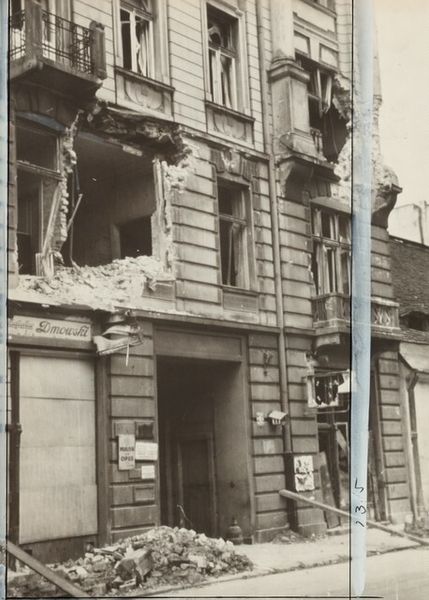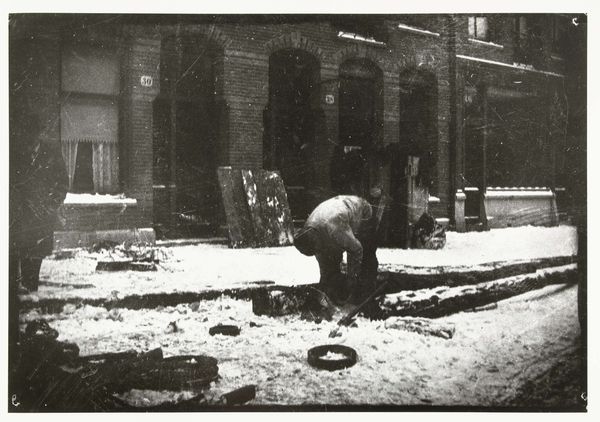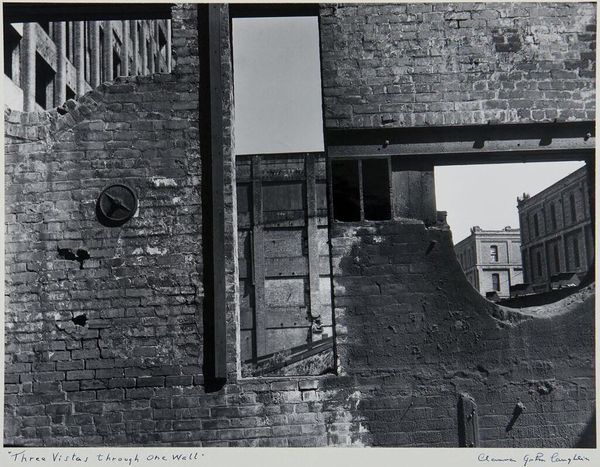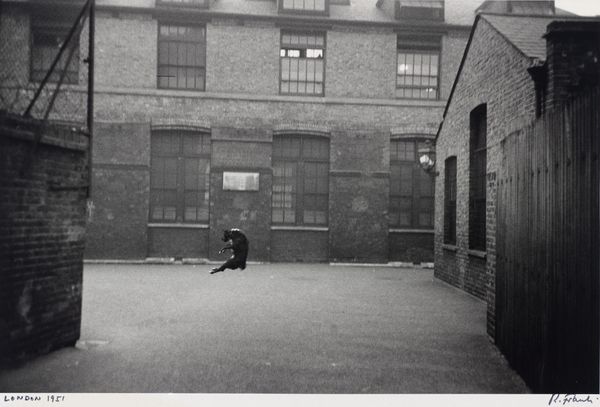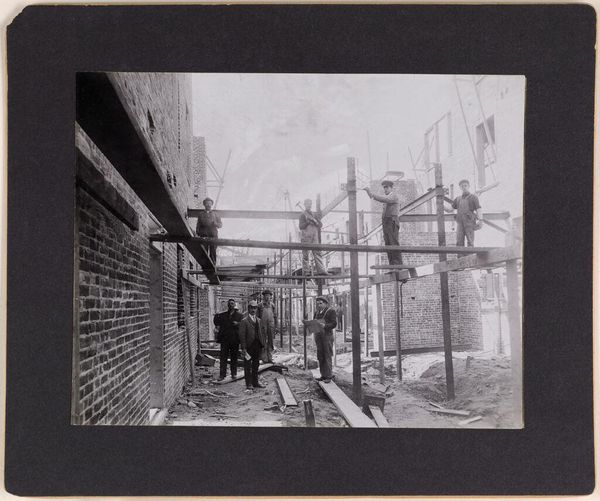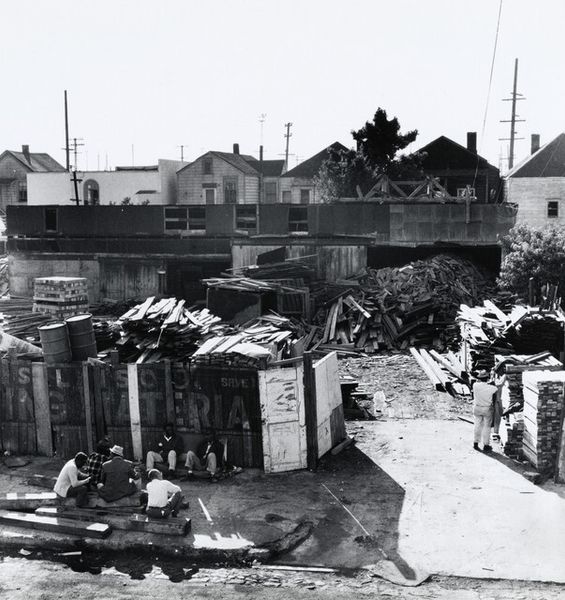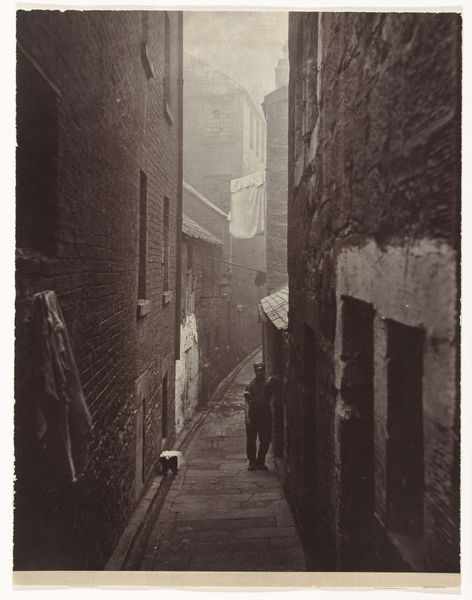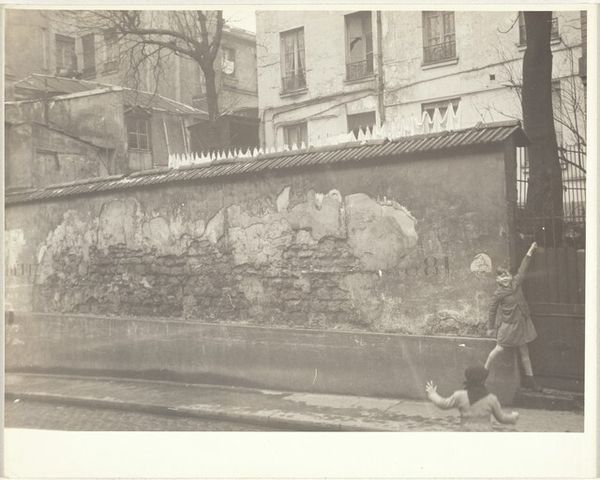
Dimensions: sheet: 27.6 × 35.4 cm (10 7/8 × 13 15/16 in.) image: 21.3 × 32.6 cm (8 3/8 × 12 13/16 in.)
Copyright: National Gallery of Art: CC0 1.0
Editor: We're looking at Jim Goldberg's black and white photograph, "Street Map (#6)," possibly from the late 80s or early 90s. It's a pretty gritty scene – an alleyway cluttered with boxes and some figures walking away from us. What's your take? Curator: You know, this image whispers of untold stories. It feels raw, like a forgotten corner of the city exhaling its secrets. The composition is striking, almost cinematic. Goldberg positions us right there, amidst the discarded remnants of urban life. See how the light struggles to break through, creating these dramatic contrasts? The figures become almost spectral, disappearing into the depths. I can almost hear echoes and smell stale beer... it really does have that social realist quality to it, wouldn’t you say? Editor: Absolutely. I see the social realism in how he captures the everyday reality. Do you think the title has a deeper meaning? Curator: Oh, definitely! "Street Map," right? It suggests a guide, but not the typical tourist kind. Maybe it's mapping out the lives of those on the margins. Or maybe it is Goldberg offering us clues on how to read these neglected spaces? He's showing us how spaces, too, have a topography of its own. I find myself wondering about the lives and dramas hidden within the buildings framing that alleyway. Editor: That’s interesting. I hadn't thought about the people *in* the buildings. The figures feel lost, not guided. Curator: Perhaps that's the paradox? The map is there, but the direction remains unclear? Sometimes getting lost is exactly what you need. Editor: True! Thanks, I definitely see the work in a new light now. Curator: It was my pleasure! Remember, art, like any map, is really just an invitation.
Comments
No comments
Be the first to comment and join the conversation on the ultimate creative platform.


